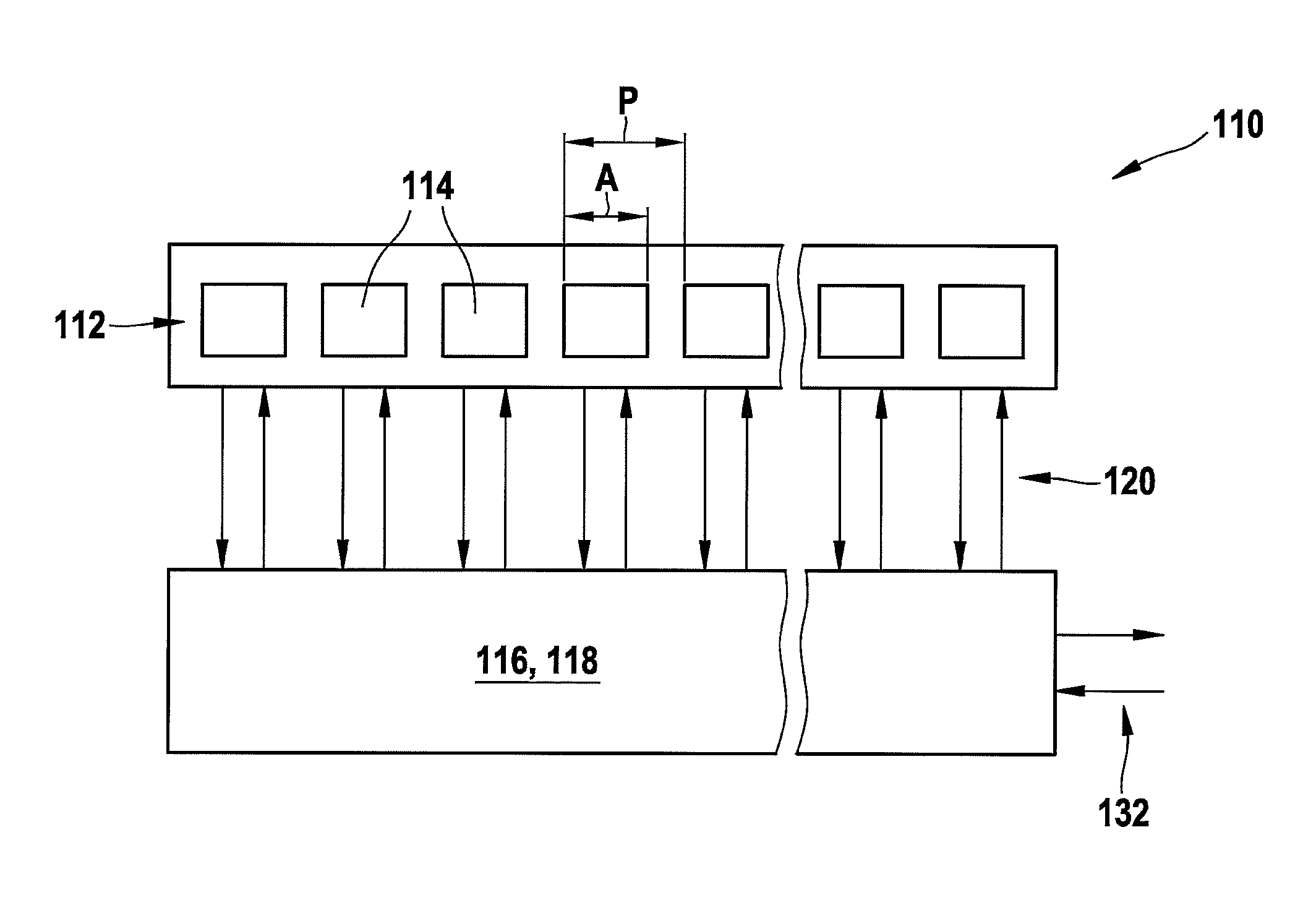Apparatus for the detection of light in a scanning microscope
a scanning microscope and apparatus technology, applied in the field of light detectors, can solve the problems of saturation limit the maximum obtainable signal per pixel, insufficient fluorescence photons, signal-to-noise ratio and/or signal strength of signals to be detected, etc., and achieve the effect of quick and reliable acquisition of image data
- Summary
- Abstract
- Description
- Claims
- Application Information
AI Technical Summary
Benefits of technology
Problems solved by technology
Method used
Image
Examples
first embodiment
[0042]FIGS. 1A and 1B show a light detector with a line array;
[0043]FIG. 1C shows an embodiment of an active quenching circuit for an APD of the line array according to FIGS. 1A and 1B;
second embodiment
[0044]FIGS. 2A and 2B show a light detector with two line arrays;
[0045]FIG. 3 shows a first embodiment according to the invention of a line scanning microscope comprising a spatial beam splitter and a light detector according to the invention;
[0046]FIG. 4 shows a second embodiment of a line scanning microscope comprising an additional dichroic beam splitter arranged in the detection light path; and
third embodiment
[0047]FIG. 5 shows a line scanning microscope comprising a prism arranged in the detection light path.
DETAILED DESCRIPTION OF THE DRAWINGS
[0048]FIGS. 1A and 1B depict a first embodiment of a light detector 110 according to the invention. FIG. 1A shows the external construction of the light detector 110 while FIG. 1B is used to schematically clarify the electric circuitry of the light detector 110.
[0049]The light detector 110 in the embodiment shown in FIG. 1A comprises a line array 112 which is constructed as a monolithic semiconductor element in this example and which comprises a plurality of avalanche semiconductor detectors 114 (also referred to as APDs in the following) arranged in series. The line array 112 has a pitch which is denoted by P in FIG. 1A and which is for instance 150 μm. The active part, which is implemented by the active areas of the APDs 114, is denoted by A in FIG. 1A. Consequently, the linear filling factor is NP and can for instance be at 50 percent or higher...
PUM
 Login to View More
Login to View More Abstract
Description
Claims
Application Information
 Login to View More
Login to View More - R&D
- Intellectual Property
- Life Sciences
- Materials
- Tech Scout
- Unparalleled Data Quality
- Higher Quality Content
- 60% Fewer Hallucinations
Browse by: Latest US Patents, China's latest patents, Technical Efficacy Thesaurus, Application Domain, Technology Topic, Popular Technical Reports.
© 2025 PatSnap. All rights reserved.Legal|Privacy policy|Modern Slavery Act Transparency Statement|Sitemap|About US| Contact US: help@patsnap.com



